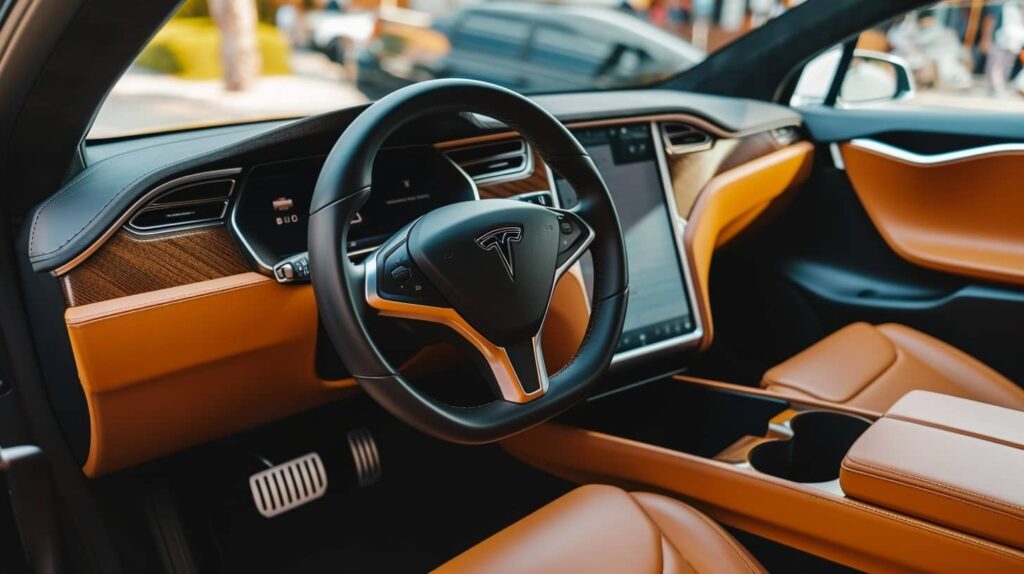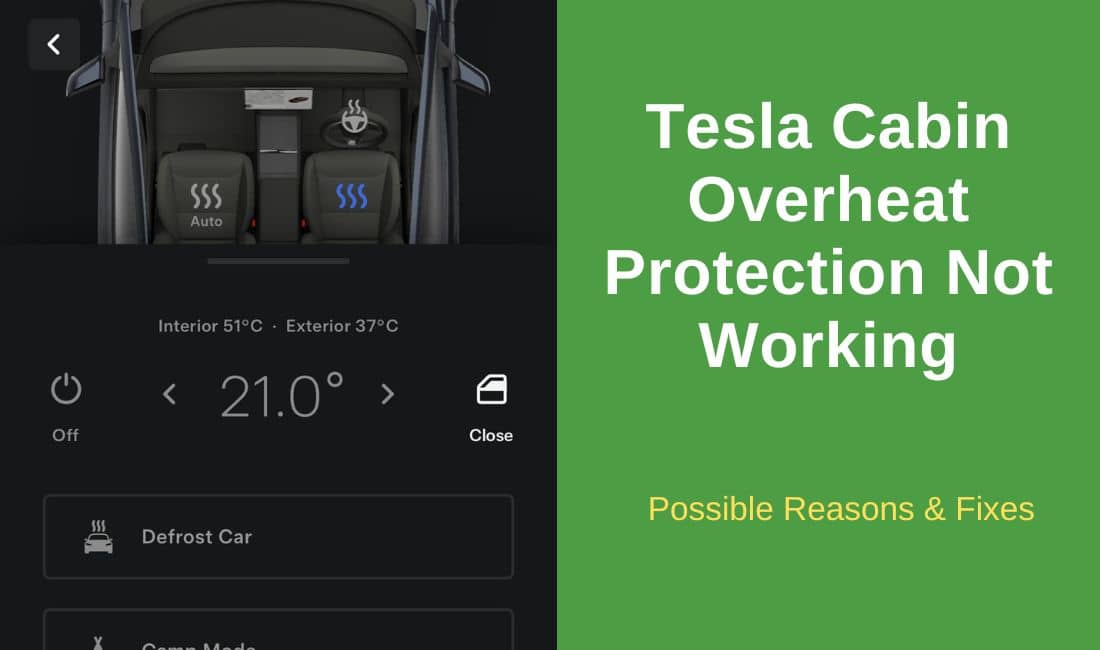Cabin overheat protection, or COP, is designed to keep the Tesla cabin from getting dangerously hot. When the inside temperature is higher than 40°C or 105°F, this feature kicks in and cools down the cabin. But sometimes, the feature seems to be glitchy.
So, why is the Tesla cabin overheat protection not working? If the battery level is below 20%, cabin overheat protection won’t work. It will also shut off when the cabin temperature is lower than the set range. Excess outdoor temperatures, running COP for too long, and not parking the car correctly can also cause this feature not to work.
Let’s find out all the possible reasons behind this problem and how to solve it.
Tesla Cabin Overheat Protection Not Working: Detailed Reasons and Solutions

Cabin overheat protection in Tesla is a convenient feature to prevent the cabin from overheating when you leave the car for some time. This feature might not work if there are the following reasons.
1. Low Battery Level
This feature uses the fans and the AC system to cool down the cabin temperature. So, it drains the battery a lot. When the battery level goes below 20%, this feature will automatically shut off.
No matter how high the cabin temperature is, cabin overheat protection won’t activate with a low battery.
Solution
- You need to charge the vehicle immediately. Go to a supercharger station to charge the battery. Alternatively, you can use the mobile charger or wall charger at home to charge the vehicle.
- After the battery is charged, try turning the cabin overheat protection on.
2. Incorrect Parking Issue
Cabin overheat protection is meant to be used when the car is parked, and you aren’t inside the car. Many users confuse this for the car to be stationary. If you stop the car somewhere but the car is still in Drive, Reverse, or Neutral, cabin overheat protection won’t work.
You will see the COP icon in gray. The problem can also happen if you are still inside the vehicle after parking it.
Solution
- After stopping the car properly, you should put it in Park mode. Then, leave the car and lock it.
- Remember, the cabin overheat protection might need about 15 minutes to activate after you leave the car. If you get back within this period, the feature might not work.
3. Cabin Overheat Protection Is Turned On for Too Long
There is a set time limit for the cabin overheat protection to work. Once you leave the vehicle and the cabin overheat protection starts working, it can run for up to 12 hours.
After this period, the feature will shut off automatically. Even if the cabin temperature gets higher than 105°F, the cabin overheat protection won’t work. So, turning the feature on and leaving your car for too long can cause this problem.
Solution
- If you intend to use cabin overheat protection, don’t leave your car at the Park for more than 12 hours.
- When you need to do that, make sure you get back to the car before 12 hours. Then, unlock the car once and lock it again. This will restart the cabin overheat protection feature. I warn you, running the feature for so long can drain a lot of battery.
4. Cabin Temperature Is Lower Than Set Limit
The cabin overheat protection only works when the cabin temperature goes higher than 105°F. Even if you have turned the feature on and left the car in Park mode, this feature won’t work until the cabin temperature is higher than the set limit.
You might feel hot at temperatures like 100°F, but the car won’t detect that temperature as risky. So, the cabin overheat protection won’t turn on.
Solution
- You don’t have to do anything about this. The system will automatically detect the cabin temperature and turn the feature on when the cabin temperature passes 105°F.
5. Various Modes Are Selected
Tesla offers different modes to ensure the best battery optimization. For example, it has a Transport mode, where the vehicle uses the least battery by turning off many features. Cabin overheating protection is one of them.
If you have just got your Tesla, this mode can be turned on. Other modes, such as the Sentry mode, Dog mode, etc., can also override the cabin overheat protection feature. With these modes turned on, the cabin overheat protection won’t work.
Solution
- You need to check what modes are turned on. If the Transport mode is turned on, you need to tap on “Controls” from the main screen. Then, select “Service” and tap on “Towing”.
- Go to the “Transport Mode” and deactivate it. Then, you can restart the screen, and the cabin overheat protection should work properly.
- Similarly, you need to turn Sentry or Dog modes off. To do this, go to “Controls” and then “Safety”. Select the preferred mode and tap the “Off” button or icon.
6. The Software Is Outdated or Glitchy
Your Tesla software needs to be updated regularly for all systems to work properly. If the software is outdated, the cabin overheat protection might not work. Sometimes, software bugs can also hamper the performance of COP.
Solution
- You have to update the software first. Tap on “Controls” and select the “Software” tab. On the right side, you will find the “Software Update” section.
- From there, find if any software update is available. Download and install the update over Wi-Fi.
- Then, go to “Controls” again and select “Safety.” Tap on the “Power Off” button to turn the system off.
- Wait for about two minutes. Then, press the brake lightly to turn the screen on. After the restart, check if the cabin overheat protection works properly.
FAQs
You should check the answers to some commonly asked questions about Tesla cabin overheating protection not working.
Yes. Tesla says that extreme weather conditions may interrupt the cabin overheat protection. So, the feature won’t turn on when there is scorching heat outside.
If you have checked all the steps above and the feature still doesn’t work, you should schedule a service appointment with the Tesla.
No. All windows should be closed when you leave the car. Otherwise, cabin overheat protection may not work.
Conclusion
Cabin overheat protection is a convenient security feature in Tesla vehicles. The system has some prerequisites to work. If you fail to check those items, the feature might not work properly. So, why is the Tesla cabin overheat protection not working?
Low battery levels, incorrect parking, various modes, extreme outdoor temperature, software bugs, etc., can cause this feature to shut off. You should check every possible reason and use the solutions mentioned here to get the system back to work. Only use this feature when necessary to increase the battery range.

I am an experienced guide in electric mobility, offering clear and expert guidance for those venturing into the world of electric vehicles.
Through collaborations, research, and hands-on experience, I navigate readers through the evolving landscape of smart automobile technologies and the significance of renewables.

